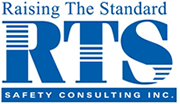Safety Managers Introductory Training Program
Your safety manager must be familiar with the provisions of the Occupational Health & Safety Act and the regulations that apply to the work, and to coordinate the workplace health & safety activities. They must have formal training including but not limited to:
- Health, safety and the law
- Planned workplace inspections
- Accident investigation
- Loss control management
- Occupational health and safety certification
This two day introductory training program session will provide the basics of their requirements. The training program will include:
1. Legislation
- Demonstrate the ability to look up information in the OHSA and regulations
- Identify responsibilities of employers, supervisors and workers
- Recognize the importance of the Internal Responsibility System
- Define the key terms in the Act and Regulations
- Recognize the fines and penalties listed in the Act
- Understand the role, powers and functions of an MOL inspector
- Distinguish between different regulations made under the Act
2. Loss Control Management Principles
- Due Diligence
- Auditing/ Inspections
- Joint Health & Safety Committee
- Procedures
- Physical and Chemical Health Hazards
- Designated Substances
- Fire Protection and First Aid
- Implementation of the Committee
- Accident/Incident Investigation
3. Due Diligence
- Define good management principles
- Recognize how it links to the Internal Responsibility System
- Understand how a good policy and program contributes to Due Diligence
4. Auditing/ workplace Inspection
- Understand the role auditing/inspection
- Review different auditing/inspection systems
- Demonstrate the need for auditing/inspection of their program
- Develop an audit/inspection for an element of a safety and health program
5. Joint Health and Safety Committee (JHSC)
- Understand the role of the JHSC in the firm
- Identify the powers and functions of the JHSC
- Recognize the structure and operation of an effective JHSC
- Review the importance of recommendations made by the JHSC
6. Procedures
- Review the legal need for a policy and program for health & safety
- Define what a policy and procedure is
- Explain the components of a good procedure
- Recognize that both legal and company procedures exist
- Review the company procedure manual
- Discuss methods for implementing these procedures
7. Physical and Chemical Hazards
- Define the relevant legislation for physical and chemical health hazards
- Identify the health effects of specific hazards such as dust, noise, and chemical solvents
- Select different control methods appropriate for these hazards
- Evaluate the workplace for these hazards
8. Designated Substances
- Review relevant legislation for designated substances
- Explain the components of a good control program
- Evaluate the company program and recommend improvements
9. Fire Protection and First aid
- Identify relevant parts of the fire code
- Understand specific requirements for fire protection equipment
- Recognize the need for an emergency plan for the workplace
- Identify the workplace requirements for first aid
10. Implementation Committee
- Organize a committee to implement the safety and health program
- Develop Terms of Reference for the committee
- Define the purpose of the committee
- Identify what tools and resources are required to achieve the purpose
- Identify problems for the implementation process
- Develop solutions for these
- Develop timelines and task lists for implementing

